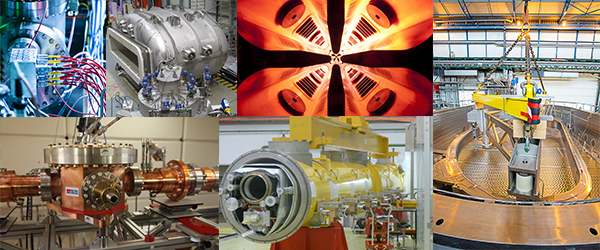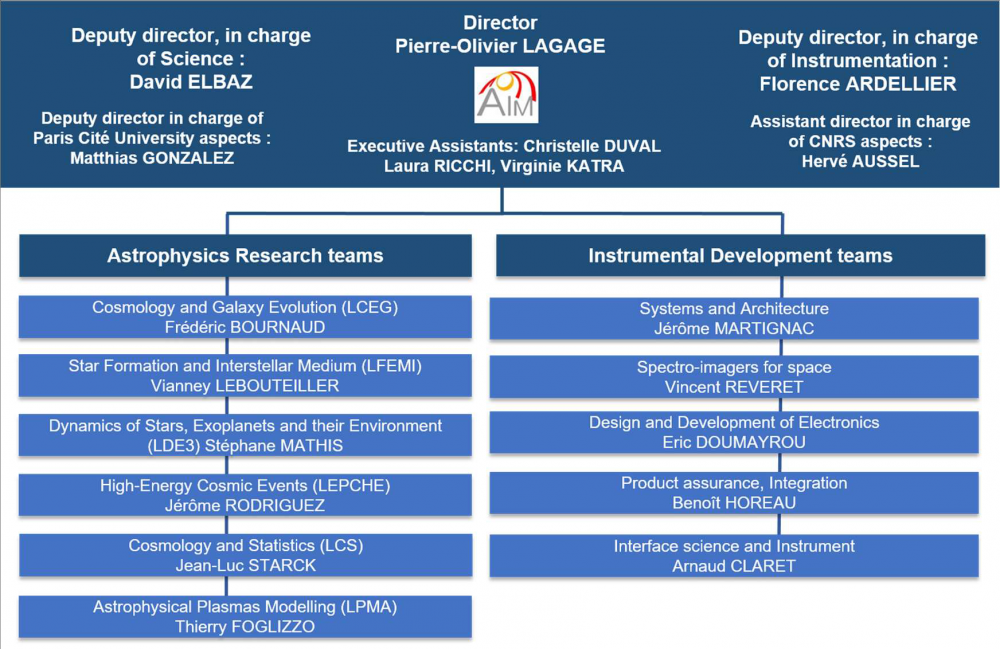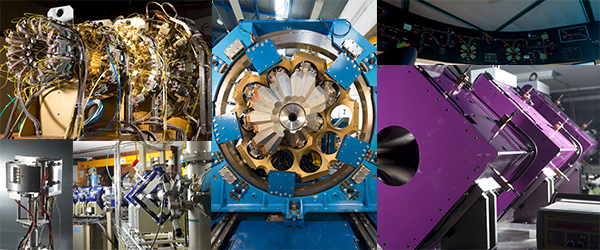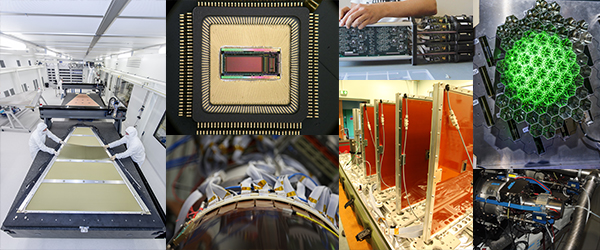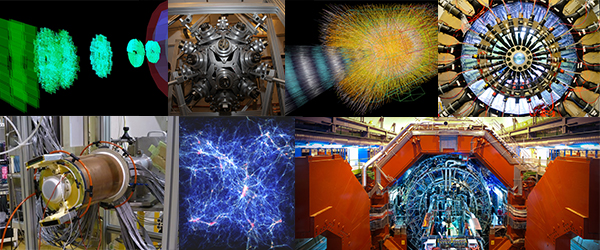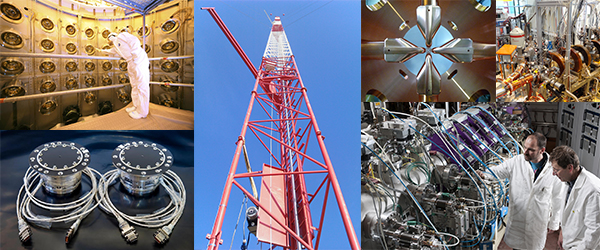The mission of the division of accelerators, cryogenics and magnetism is to develop and produce particle accelerators, ion sources, accelerator cavities, cryogenic systems and superconducting magnets for Irfu's scientific programs. For this, the DACM has extensive assembly, integration and testing facilities, ranging from winding and magnet assembly halls, to large clean rooms for accelerator systems and small test stations to characterize materials, to very large stations capable of testing complete assemblies.
Thanks to its advanced skills, the DACM ensures the prime contracting of accelerators or parts of accelerators such as Iphi, the design and prime contracting of accelerator magnets and magnets integrated into detection devices as well as associated cryogenic devices. Drawing on its skills, the DACM applies its technologies to other research fields such as energy with the JT-60SA tokamak or life sciences with the Iseult project magnet.
In order to ensure the conduct of large-scale projects, the DACM must develop the corresponding testing resources. Thus, it also conducts a strong R&D program that prepares the future of technologies to provide the necessary tools for advances in basic and applied research. It also designs and develops platforms and test stations as well as the production of cryogenic fluids used at Irfu.
A major space laboratory
The Astrophysics Department, UMR AIM within IRFU, is one of the major space laboratories in France, at the European and international levels. In direct collaboration with CNES, which oversees the space activities of French laboratories, it is heavily involved in the space missions of ESA's Cosmic Vision scientific program, as well as in bilateral missions led by CNES.
The development of astrophysics at CEA began in partnership with CNES from its inception in the early 1960s. Astrophysics is a rapidly growing science due to its high potential for discoveries. Increasingly numerous and powerful instruments, both ground-based and satellite-based, allow us to probe the universe with enhanced angular resolution and sensitivity across the entire electromagnetic spectrum. At the same time, modeling, particularly through numerical simulations, is becoming increasingly important in astrophysics; astrophysical problems are often complex and involve other disciplines of physics. Astrophysics and other fields of physics enrich each other mutually.
The Ganil division aims to contribute to the development and operation of the very large "Grand Acélérateur National d'Ions Lourds" research infrastructure located in Caen, as well as to the experiments and research carried out there. The department is particularly involved in the design, implementation and analysis of experiments using heavy ion beams in the field of nuclear physics or multidisciplinary research. He also participates in theoretical studies in these fields. The close articulation between the different research themes leads Irfu researchers to carry out different theoretical works at the same time and to carry out experiments whose complementarity makes it possible to advance the understanding of the organization of matter on the scale of the infinitely small as well as the infinitely large.
The department is finally in charge of proposing the evolutions of the accelerator and experimental areas such as S3, the super spectrometer separator, where Irfu is involved in the detection device or Actar for future experiments. The Ganil centre in Caen being an EIG, the research carried out by the CEA is part of a European research project on nuclear physics. Open to researchers from all over the world and to industry, the research platforms where Irfu is present are at the heart of one of the 5 largest laboratories in the world, dedicated to the study of heavy ion beams.
The main vocation of the Department of Sensor Electronics and Computer Science for Physics is to invent and build the ambitious and innovative detection instruments of the future, essential to the progress of physics studied at Irfu. This involves both positioning on large projects, such as NECTARCAM for CTA with the development of chips capturing and recording ultra-fast detector signals or the development of CMOS detectors for the LHC collider, Caliste cameras for the Solar Orbiter satellite but also software development on board the SVOM satellite.
This state-of-the-art instrumentation is not possible without strong R&D involvement, particularly in the fields of gas detectors and microelectronics, the fields of excellence of DEDIP. With technological infrastructures such as clean rooms for the integration of instruments, dark rooms for the characterization of ultrafast detectors or the micromegas workshop for their manufacture. Thanks to this complementarity of mechanical, computer and... profiles, the DEDIP can autonomously design complete detection systems from sensors to data visualisation.
The nuclear physics department conducts experimental activities, participating in experiments with particle accelerators such as Alice at the LHC, and fundamental theoretical research activities focused on the study of matter at the level of nuclei and their components. Two scales are studied at DPhN. The first is at the level of quarks or gluons where experiments such as Compass at Cern enriched the debate on the asymmetry of quantum reactions. The second concerns the assembly of nucleons (proton or neutron) into atoms. Thus, studies on exotic nuclei, i.e. unstable nuclei with unusual structures, are conducted at Spiral2. The DPhN's primary objective is to deepen our knowledge of these systems and their reactions. Another field of study concerns neutrinos, an elementary particle that still retains some mysteries, whose characteristics are essential for understanding the evolution of our world.
To answer these major questions, the DPhN contributes to the design and exploitation of theoretical models such as the theory of quantum chromodynamics, computational codes and instruments that allow this research to be carried out successfully. The technologies necessary for the successful conduct of these research programmes are important technological challenges. Indeed, nuclear reactions are particularly rapid (the de-excitation of an atom occurs in about a picosecond) and sensitive.
![]() Access to DPhN's website : irfu.cea.fr/dphn/en
Access to DPhN's website : irfu.cea.fr/dphn/en
The core of DPhP's activities is the understanding of the energy content and dynamics of the Universe at the fundamental level, by acquiring the appropriate experimental means, in synergy with the other Irfu’s departments, and in concert with the international scientific strategy.
In particle physics, the established theoretical basis is the Standard Model of Particle Physics (SM). Extremely robust and predictive, it nevertheless leaves many exciting open questions that the department is addressing from three angles:
- Testing the internal consistency of the MS by precision measurements at the LHC (ATLAS and CMS), and in the future at the HL-LHC, and then at the collider that will take over (FCC, ILC or muon collider);
- Testing the fundamental symmetries of the MS by studying neutrinos in long (T2K, HyperKamiokande or DUNE) or short (Double Chooz) baseline oscillation experiments, or with beta decays (KATRIN) or neutrinoless double beta decays (CUPID, BINGO), or with coherent neutrino scattering on nuclei (NUCLEUS), or by studying the fall of antimatter (GBAR);
- Filling the gaps in the MS by probing the Universe with the different messengers at our disposal: studying dark energy (DESI), dark matter (H.E.S.S., CTA), gravitational waves (LISA), cosmic neutrinos (ANTARES), or hypothetical axions (GLEAD).
To do this, the DPhP takes part in the development of detectors within projects, but also in more prospective R&D programs, for example in 5D calorimetry (BoldPET, ClearMind) or in muon tomography (ScanPyramids) which have direct societal applications.
![]() Access to DPhP's website : http://irfu.cea.fr/dphp/en/index.php
Access to DPhP's website : http://irfu.cea.fr/dphp/en/index.php
The systems engineering department is in liaison with the other Irfu departments in the fields of mechanical engineering and instrumentation, research instrument design. The DIS, because of its complementary profile, is involved from feasibility studies to the deployment of equipment and during certain projects through an industrialization phase. Working in collaboration with the other departments, DIS has led to work on diversified projects such as the development of prototype magnets for the LHC's energy rise, and the project management of a complete accelerator system for various international collaborations such as FAIR or ESS. But also the mechanical architecture and the control-command of detectors such as Clas12 and Stereo.
It contributes to the testing, maintenance and evolution of these instruments through technological infrastructures and specific equipment to carry out and characterize these achievements as cryogenic optical benches for space instruments for example.
In parallel, the department is involved in research and development activities in order to maintain their high level of competence. DIS has the capability to provide a complete cryomechanical system covering mechanical engineering, power electronics and control activities.

